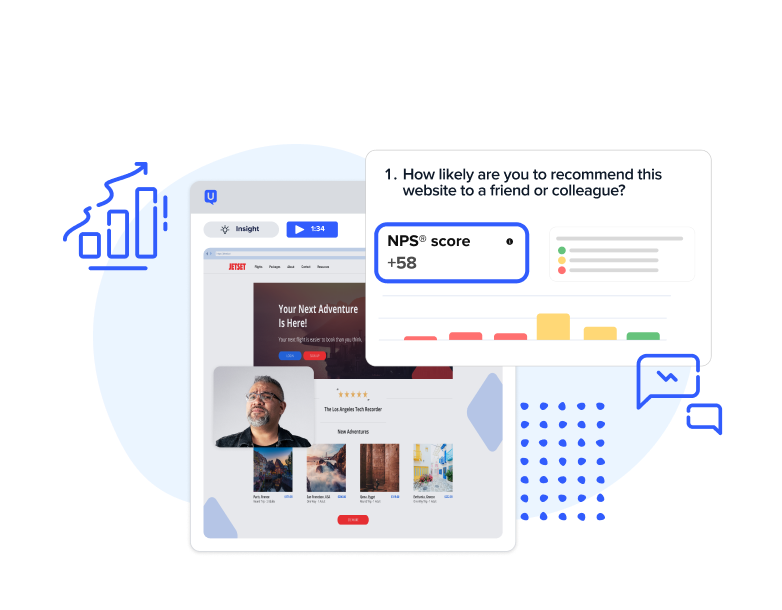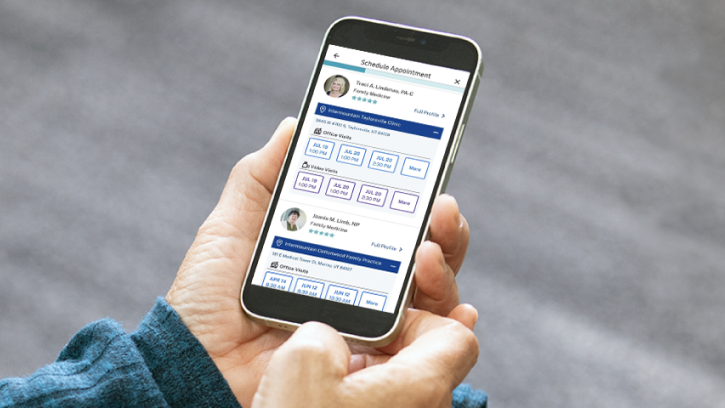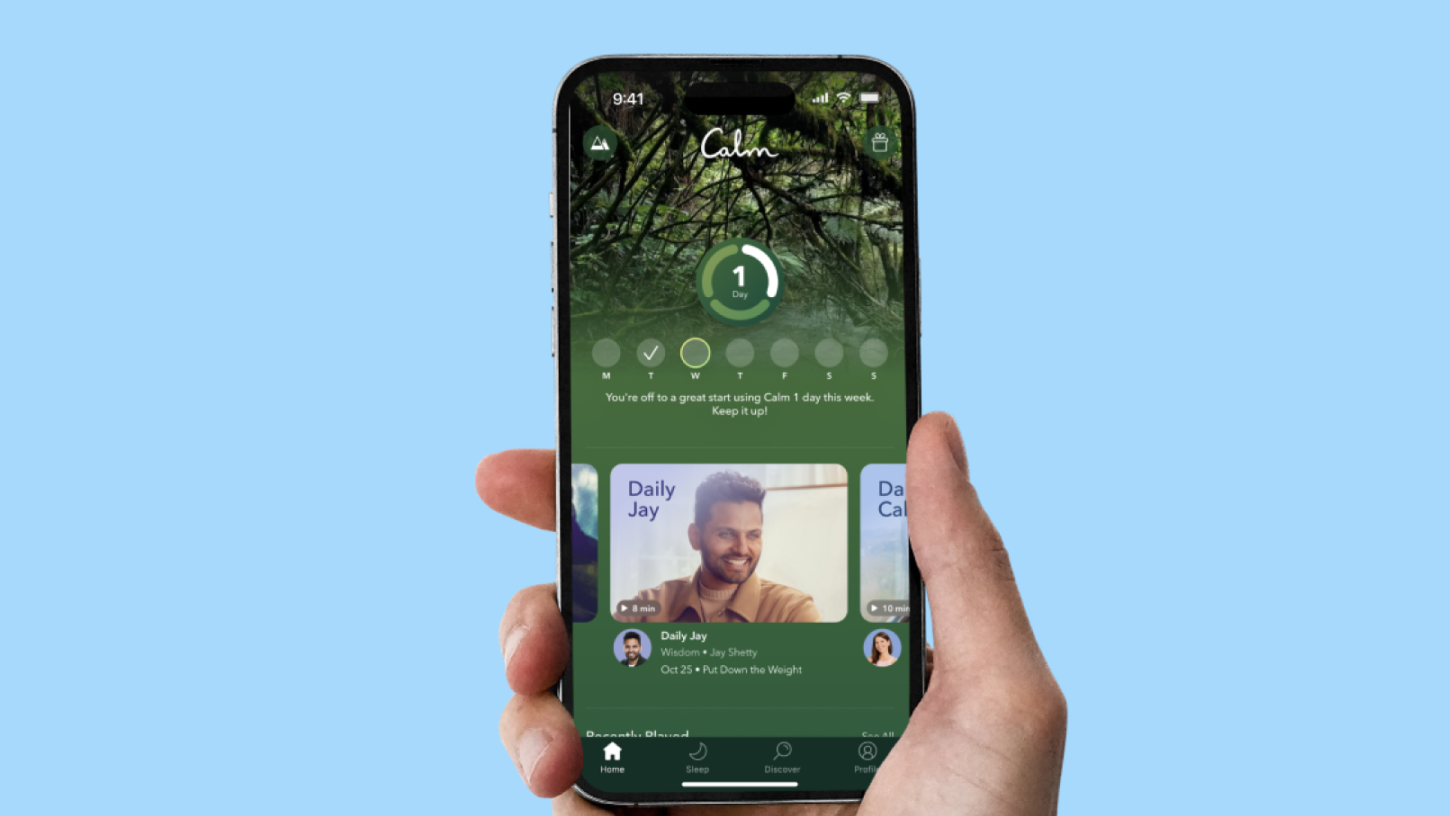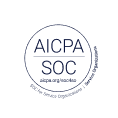
Healthcare
Helix + UserTesting
Learn how Helix used human insights to improve their enrollment process and drive expansion of their digital experience to multiple health systems
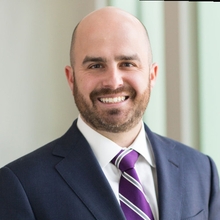
Using human insights to improve our digital experience has led to exceptional growth in participant enrollment and increased the number of partners who've chosen to use Helix's experience.
Craig Newman
Chief Transformation Officer, Helix

About the company
Helix is the leading population genomics and precision health organization. Helix enables health systems, life sciences companies and payers to accelerate the integration of genomic data into patient care and therapeutic development.
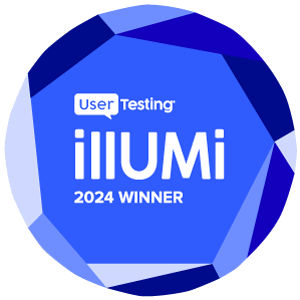
Get started now
Contact Sales- 5xIncrease in health system partners using Helix’s enrollment experience over three quarters
- 71Net Promoter Score with “easy” being the most common word participants use to describe the enrollment process
- 27%Increase in click-through rate for enrollment steps that Helix tested and improved with UX Research
Helix partners with health systems to offer community health research programs that screen participants’ DNA for their risk of developing Hereditary Breast and Ovarian Cancer syndrome, Lynch syndrome (a hereditary form of colon cancer) and Familial Hypercholesterolemia. Collectively, these are referred to as the Centers for Disease Control (CDC) Tier 1 actionable genetic conditions.

In Helix’s population genomics programs, 1 in 75 participants test positive for genetic predisposition to developing one of these serious health conditions. One of Helix's leading partner health systems found that 88% of patients that tested positive for one of these conditions had not been previously identified under current medical practice. The genetic screening results provided through participation in these research programs is helping to identify high-risk individuals who may not otherwise be aware of their risk of developing cancer or heart disease.
Each participating health system aims to enroll more than 100,000 participants over a four-year term with the intent of improving overall individual and population health. Participants have the opportunity to learn about their genetic risk for the CDC Tier 1 conditions listed above. If participants test positive, they can work with their health care providers to take proactive measures to prevent disease or detect it at an earlier, more treatable stage.
Helix sought to increase patient knowledge and access to genetic screening through enrollment in the research programs that would potentially lead to better health outcomes, especially as the company's roster of health system partners across the country continued to grow. They recognized that they may have based some user experience (UX) decisions on assumptions, rather than conclusive evidence.
To ensure optimal enrollment from potential participants, Helix conducted extensive experience testing efforts through UserTesting: Attitudinal insights were collected through surveys and interviews, and user behaviors were observed through optional screen sharing while interacting with the organization's digital experiences.
Top of funnel best practices
Helix needed to understand how to optimize positive user perceptions at their earliest touchpoints within their partners' community health programs. They tested and studied users as they went through various steps of the enrollment funnel, some of which varied between different health system partners.
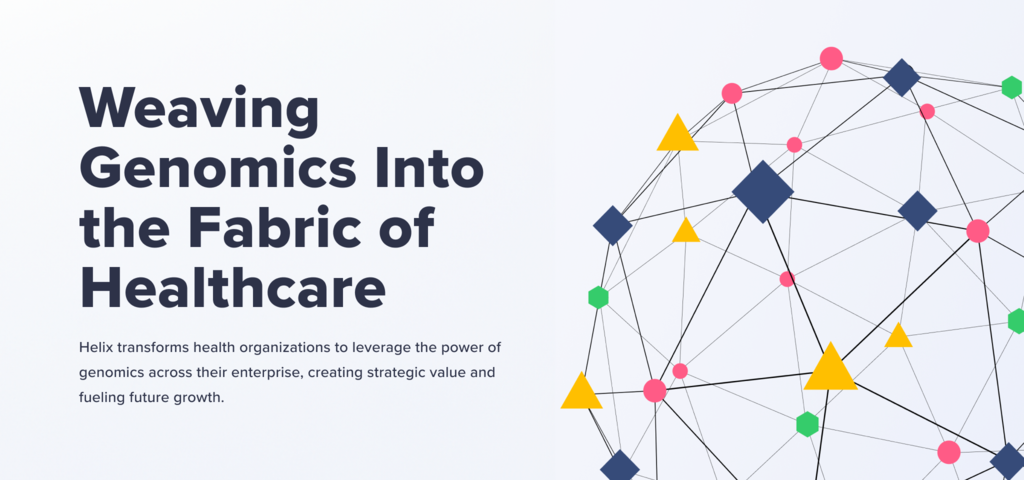
To support important health equity initiatives and create research breakthroughs that benefit diverse participant populations across all communities represented within the Helix Research Network, Helix’s UX study plans were designed to require recruitment of diverse racial and ethnic audiences.
They implemented this requirement to ensure that historically marginalized populations, who are often less likely to enroll in and benefit from genetic screening initiatives, had a significant voice in the design of their products, messaging and the precision healthcare journey they were offering.
Helix’s UX team utilized a mixed-methods approach to gather insights about the preferences and behaviors of potential participants. They used Figma prototypes to test program invitations. They reviewed text, link and button placement, and calls to action on landing pages. They also ran attitudinal surveys which gathered quantitative insights. The variety of insights collected validated prospective participants’ understanding that the program is a research study, they are able to assess potential benefits and risks to joining, and are able to use the information provided to make an informed decision about whether or not to join the program.
Helix took the findings from this project and placed them in best practices materials, which they provided to partner health systems to help guide their top-of-funnel marketing campaigns. The success of this user experience testing program helped Helix’s strategy team plan the next and most important phase: enrollment optimization.
Enrollment optimization
When a participant enrolls into a research study with a health system partner and Helix, they learn about the program (including potential benefits and risks); sign a study informed consent form (a legal document); and provide a DNA sample (which involves traveling to a clinic to have blood drawn or requesting a saliva collection kit sent to your home). For health system partners and Helix, each enrollment adds more critical information to their databases, which support genetic research discoveries. Helix’s enrollment experience needs to help participants make informed decisions about whether or not to enroll in the program.
Helix’s UX team used Figma prototypes to test for qualitative feedback. As with the investigation into their top of funnel best practices, they conducted behavioral click testing and ran attitudinal surveys to gather quantitative data points. The insights were illuminating and they helped to shape important changes to Helix’s enrollment programs.
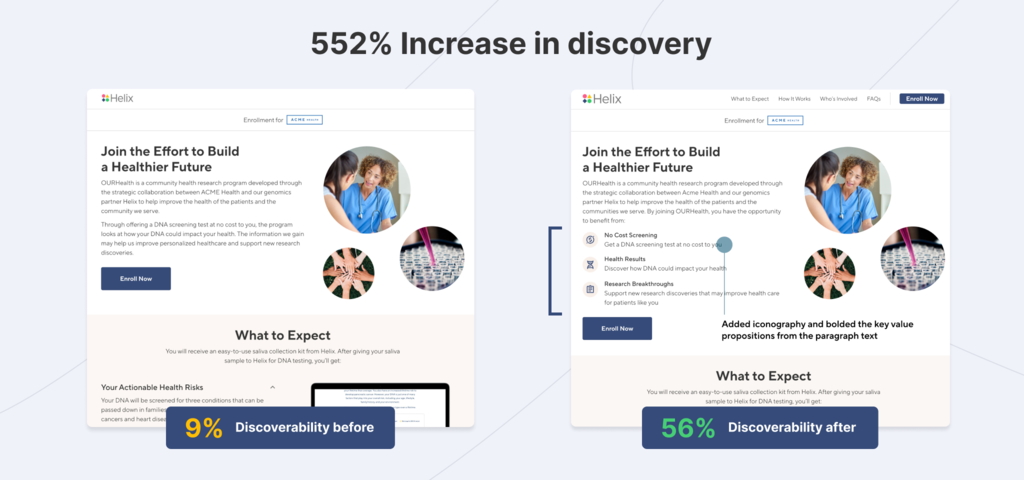
According to Andrew Schultz, Associate Director, Product Design & UX Research, “We learned it’s critical to highlight the no-cost nature of our DNA screening program at the earliest touchpoints. When users don’t see that this service is free to them, they may assume they will have to pay. If someone is unable to pay or not interested in paying, we will lose their engagement.”
Knowing this new information, Suzanne Millward, Senior UX Researcher, worked with marketing and product teams to highlight the ‘no cost’ aspect of the genetic screening programs. Addressing their financial concerns up front kept users in the funnel longer, and it gave them a chance to learn more about the benefits of signing up.
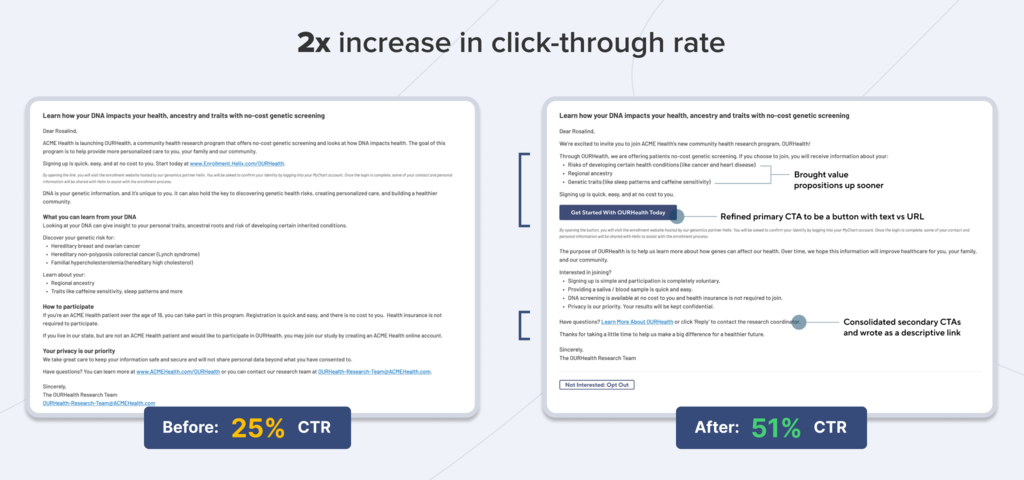
Helix also learned about ways to discuss the value of privacy in more participant-friendly terms. Per Suzanne, “We conducted a deep dive into the types of privacy information prospective users need in order to make an informed decision about whether to participate in our program. We discovered that information with complex and indirect legal language is not only frustrating for users, but can result in them dropping out of the process at an early stage.”
To address this, the team kept the legal language used in the program’s informed consent document, but re-wrote the language used in the FAQ sections, adopting clear, direct descriptions for users, and text written at a more accessible reading level to support a wider variety of user types.
The results of Helix’s experience testing programs have been dramatic. Marketing and product teams integrated 71% of UX research recommendations to date into the product build and 10% more of the recommendations are planned for upcoming sprints. The enrollment experience has an overall Net Promoter Score (NPS) of 71, and “easy” is the most common word participants use to describe enrolling.
Andrew Schultz says, “Thanks to collecting human insights, we see a noticeably higher click-through rate (94% average) for enrollment steps that we tested with UX Research. For steps that we haven’t yet tested and adjusted, the click-through rate is 74%. Seeing our success at certain steps in the enrollment funnel has led stakeholders to request UX Research support with additional projects.”
Helix achieved 113% of the network-wide enrollment target for the most recent half-year term and a 106% increase in enrollment quarter-over-quarter. Helix also saw a 5x increase in new health system partners using their enrollment flow over three quarters. The forecast appears positive, for the growth of Helix in the genomics space and for the greater availability of vital DNA insights for participants nationwide.
Embracing UX Research has helped transform the way we approach product development. By listening to the voice of our users, we're investing in the long-term success of our products and company.Kirsten Mouritsen Senior Director, Product - Enterprise & Experience, Helix
By partnering with UserTesting, we’ve succeeded in collecting human insights to establish a best-in-class enrollment experience. We built this on a growing knowledge of our users’ wants, needs, attitudes, and behaviors.Andrew Schultz Associate Director, Product Design & UX Research, Helix
Human insights help our team make data-driven decisions with confidence and conviction. The benefits spread over time! As our knowledge expands, we are able to solve for a growing variety of use cases and user types at increasing speeds.Suzanne Millward Senior UX Researcher, Helix
Guide
How to increase NPS with human insight
Discover how to improve NPS with human insights. Learn actionable strategies to enhance customer experiences and drive higher Net Promoter Scores with UserTesting.
